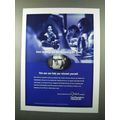Funchal, Madeira - Western View - postcard c.1970s
- Skick : Begagnad
- Frakt : 2 dagar
- Märke : Inga
- ID# : 93649162
- Antal : 1 produkt
- Visningar : 480
- Plats : Storbritannien

- Säljare : justthebook (+1712)
- Streckkod : Inga
- Start : Lör 23 feb 2013 21:58:22 (CEST)
- Stängning : Pågår till såld
- Tid kvar : Pågår tills såld
Check
 för 1 föremål ändra
för 1 föremål ändra
Frakt Räknare
Mer annonser från denna säljare se alla
Säljarens Beskrivning
- Postcard
- Picture / Image: Funchal (Maderia), Portugal - Western View
- Publisher: GM Natural Colors
- Postally used: no
- Stamp: n/a
- Postmark(s): n/a
- Sent to: n/a
- Notes / condition:
Please ask if you need any other information and I will do the best I can to answer.
------------------------------------------------
Postage & Packing:
UK (incl. IOM, CI & BFPO): 99p
Europe: £1.60
Rest of world (inc. USA etc): £2.75
No additional charges for more than one postcard. You can buy as many postcards from me as you like and you will just pay the fee above once. (If buying postcards with other things such as books, please contact or wait for invoice before paying).
Payment Methods:
UK - PayPal, Cheque (from UK bank) or postal order
Outside UK: PayPal ONLY (unless otherwise stated) please. NO non-UK currency checks or money orders (sorry).
NOTE: All postcards are sent in brand new stiffened envelopes which I have bought for the task. These are specially made to protect postcards and you may be able to re-use them. In addition there are other costs to sending so the above charge is not just for the stamp!
I will give a full refund if you are not fully satisfied with the postcard.
----------------------------------------------
Text from the free encyclopedia WIKIPEDIA may appear below to give a little background information (internal links may not work) :
*************
Funchal (Portuguese pronunciation: [fu'?a?]) is the largest city, the municipal seat and the capital of Portugal's Autonomous Region of Madeira. The city has a population of 111,892[1] and has been the capital of Madeira for more than five centuries.
This settlement began around 1424, when the island was divided into two Captaincies, and the zones that would become the urbanized core of Funchal would be founded by João Gonçalves Zarco who settled there with members of his family. Owing to its geographic location, the site became an important maritime port, while its productive soils became a focus of new settlers. Its coastal position, the most productive on the island, quickly permitted Funchal to develop an urban core and surpass the populations of other settlements, which slowly gravitated around it.
In the early 15th century, Álvaro Fernandes was the commander of Funchal.
As part of its administrative role, the settlement received its primary lighthouse between 1452 and 1454, when it was elevated to the status of vila and municipal seat. Funchal became an important transfer point for European commercial interests; many sailors and merchants located in Funchal in order to take advantage of the transient conditions of port. Christopher Columbus was one of the early settlers, but later many of the merchant families established commercial interests on the island, including: João d'Esmenaut from the Picardy region, the Lomelino from Genoa, the Mondragão from Biscay, the Acciauoli from Florence, the Bettencourts from France, the Lemilhana Berenguer from Valencia and many others.
During the second half of the 15th Century, the sugar industry expanded significantly along the southern coast, from Machico until Fajã da Ovelha, making Funchal the most important industrial centre of the industry. By the end of the century, fronting the Order of Christ, D. Manuel, Duke of Beja, expanded the support of the local community; he ordered the construction of the administrative Paços do Concelho and the Paços dos Tabeliães (completed in 1491), raised the construction of a church (began in 1493 and later raised to cathedral in 1514), and finally the construction of a hospital and customs-house in the village. In 1508, it was elevated to the status of city by King Manuel I of Portugal, and in 1514 (on completion of the Sé Cathedral) the bishopric was headquartered in Funchal.
The island, and Funchal specifically, were vulnerable to privateer and pirate attacks. In 1566, French corsairs under the command of Bertrand de Montluc, a gentleman in the court of Charles IX of France and second-son of Field Marshal Blaise de Montluc. In the month of September, he departed from Bordeaux with a force of 1200 men, on three mains ships a small fleet of eight support craft. This armada sacked Porto Santo: the events were relayed to the settlements on Madeira, and in the villas of Machico and Santa Cruz the citizenry armed themselves for the inevitable. In Funchal, the governor, Francisco de Sales Gonçalves Zarco da Câmara, did not take any action that could be construed as hostile. Meanwhile, the armada anchored in the beach of Formosa, disembarked a contingent of 800 men that marched towards the city in three columns, encountering no resistance until the main bridge in São Paulo. At the bridge the privateers encountered a force from the small fort, with a few small-caliber pieces, which were quickly routed in confusion. At the road near Carreira, the attackers were confronted by a small group of Franciscan monks, which were quickly dispatched. Funchal's fortifications were finally assaulted by land, where its defense was thin; the defenders could not even reposition many of the canons directed towards the sea. The city suffered a violent sack that lasted fifteen days, where little remained.
The following year, the military architect Mateus Fernandes III was sent to Funchal in order to completely modify the defensive system of the city. Evidence of the work produced by this architect was published in the ""Mapa de Mateus Fernandes"" (1573), considered to be the oldest plan of the island of Funchal.[2] The document identifies the major defenses of the city, which included a large fortification in the area around the dyke in Pena.
type=printed postcards
theme=topographical: rest of the world
sub-theme=europe
county/ country=portugal
number of items=single
period=1945 - present
postage condition=unposted
Annonsinformation
| Annonstyp | Galleriannons |
| Annons-ID#: | 93649162 |
| Starttid | Lör 23 feb 2013 21:58:22 (CEST) |
| Sluttid | Pågår till såld |
| Startbud | Fast pris (ingen budgivning) |
| Produktvillkor | Begagnad |
| Bud | 0 |
| Visningar | 480 |
| Avsändningstid (inkluderar inte söndagar) | 2 dagar |
| Antal | 1 |
| Plats | Storbritannien |
| Auto-förläng | Nej |




















